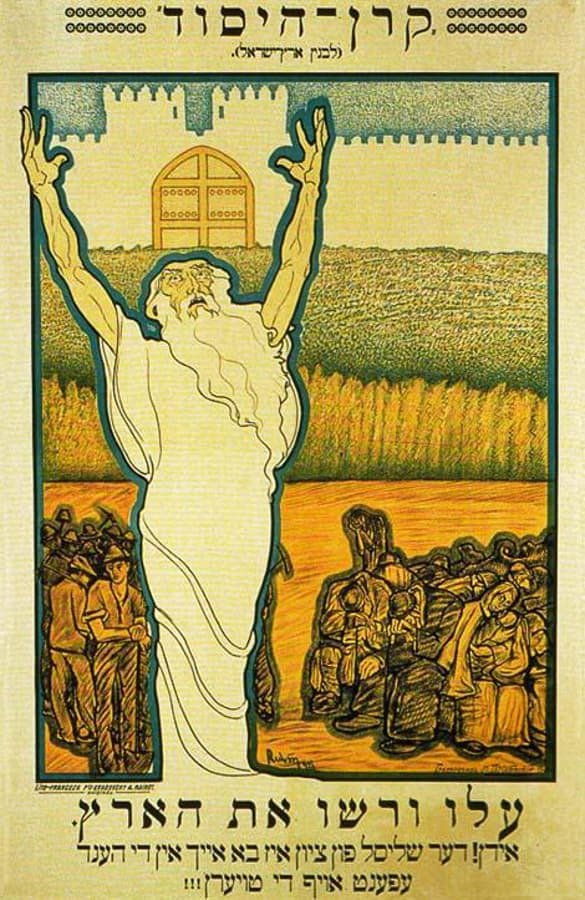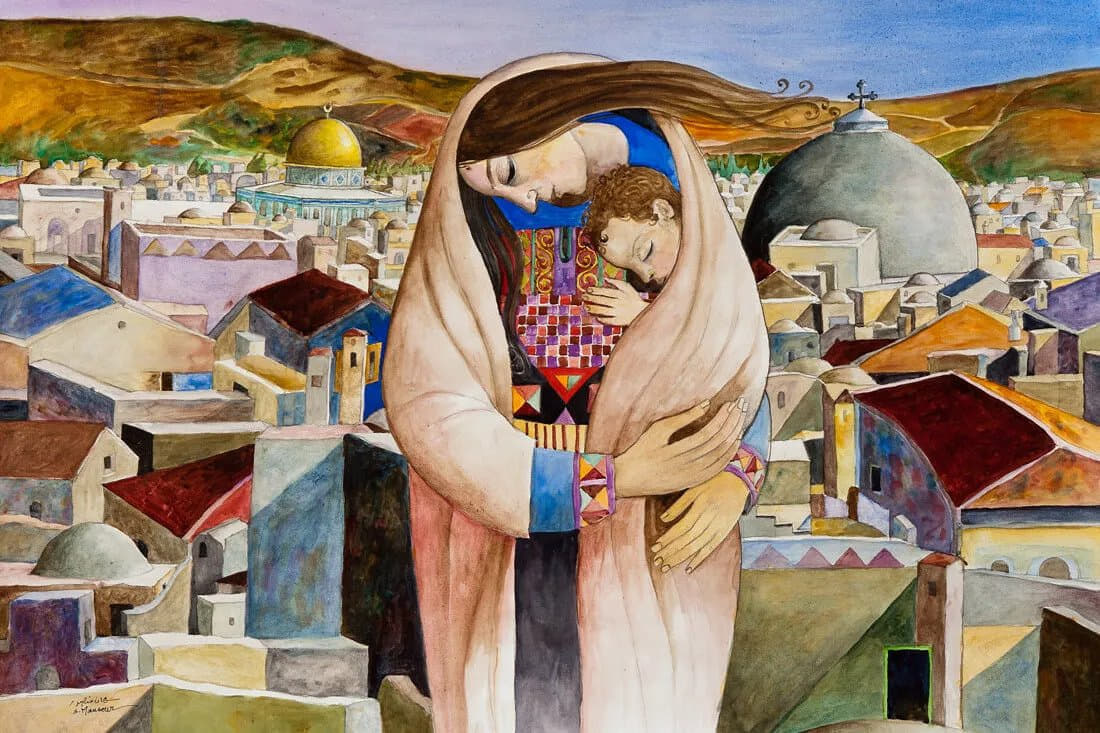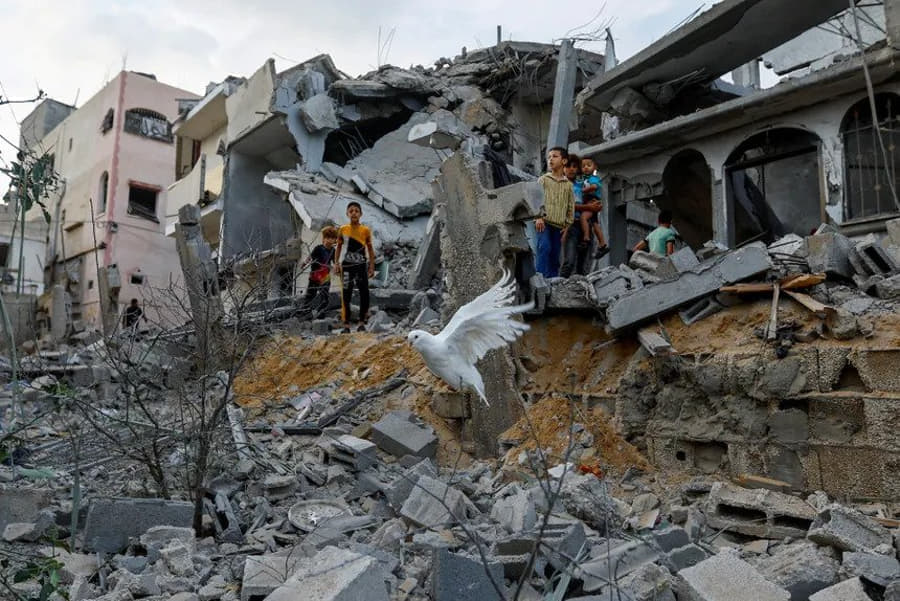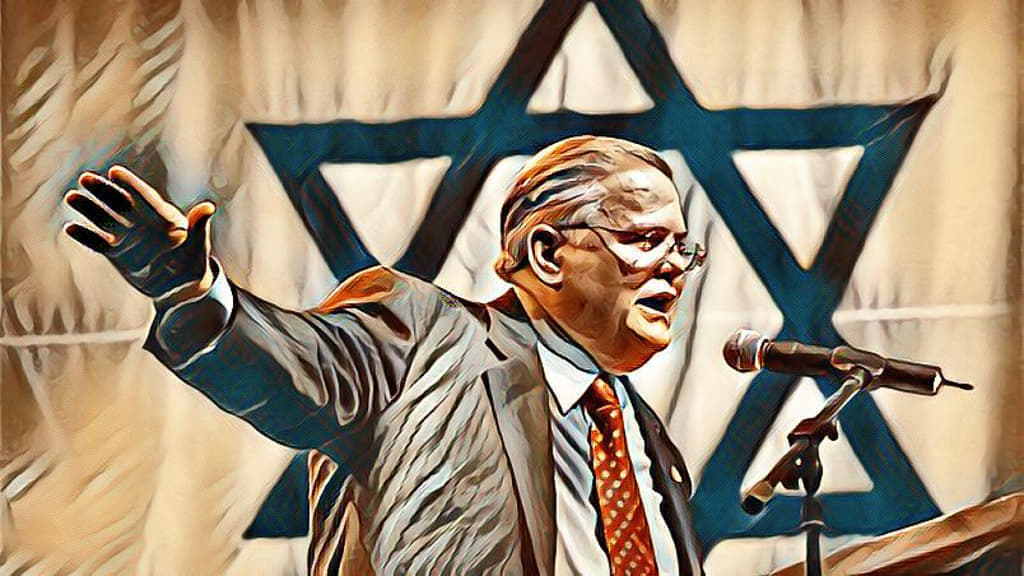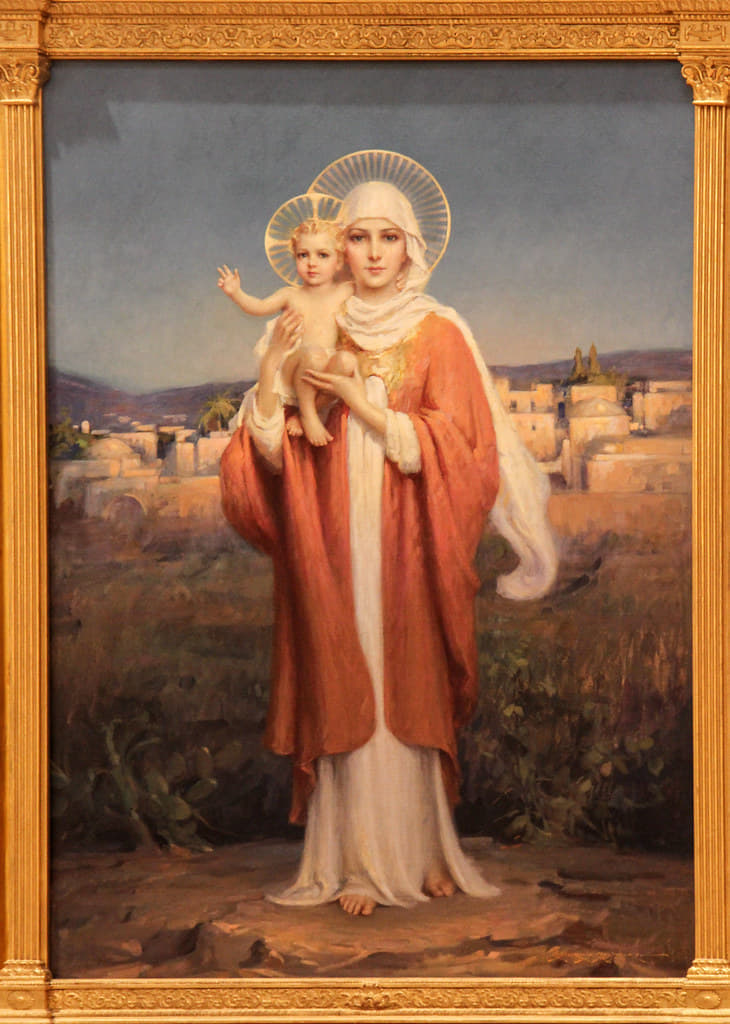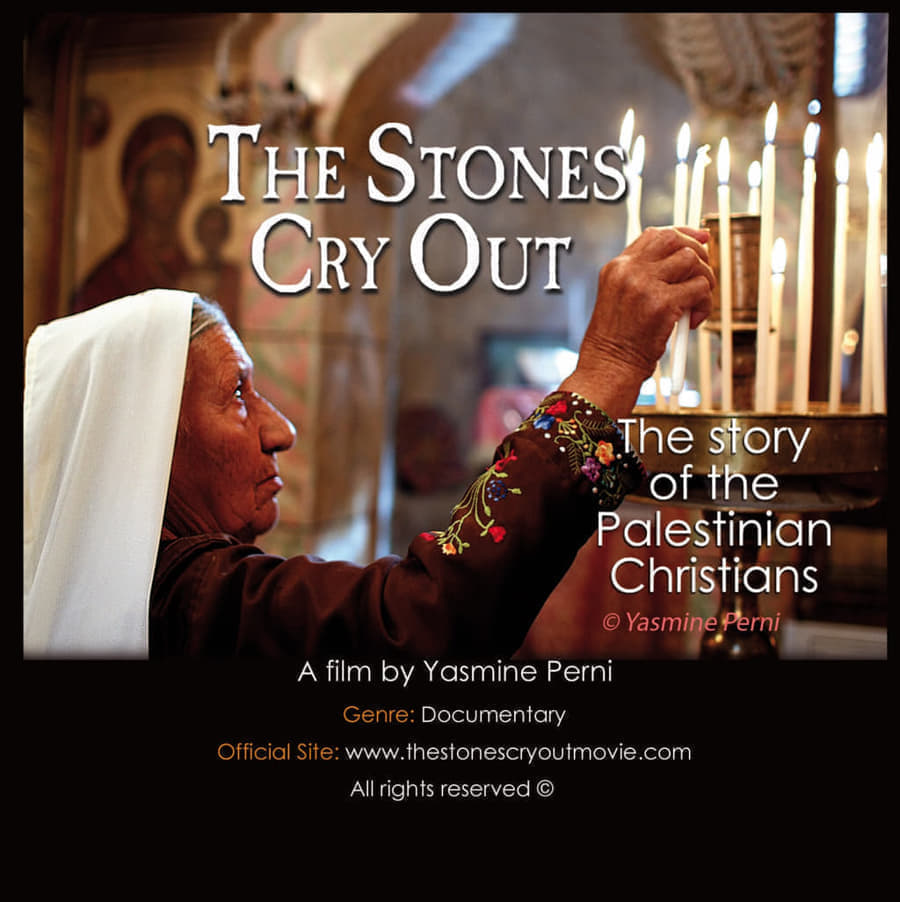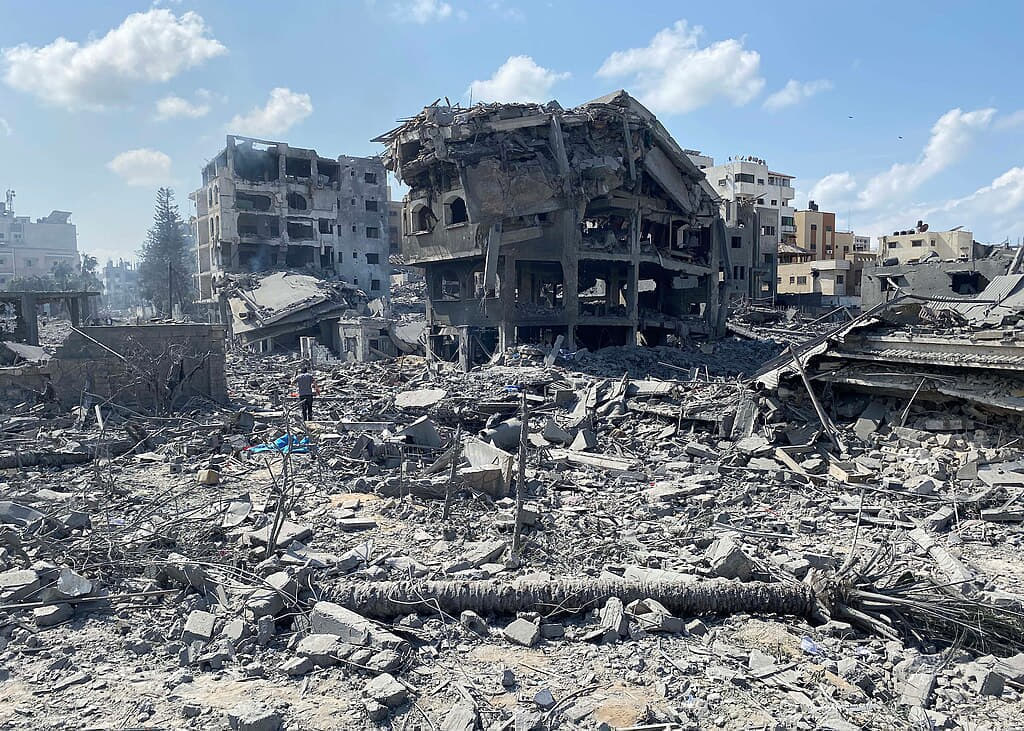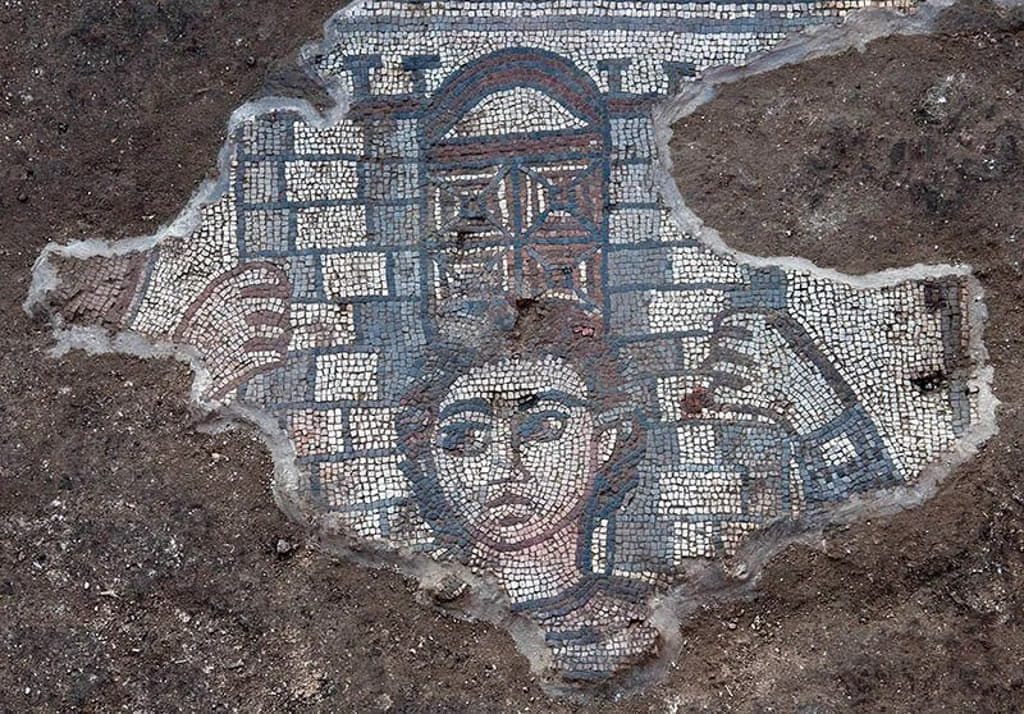There are fifteen million Jews in the world to-day, scattered over the face of the earth. Their ancestors once lived and ruled in Palestine, a country now no bigger than our own state of Vermont. For centuries, while peoples of alien faiths possessed their ancient land, each Jew kept warm in his bosom a belief that the Promised Land would one day be restored to him and the Holy City rebuilt to the glory of Jehovah.
During the last century Jews the world over began to discuss practical means for making the age-long dream of their people come true. This discussion grew into an organized movement which has rolled up in size like a snowball. Zionism, as it is called, is giving the statesmen of Christendom, as well as the Jew and the Mohammedan, a mighty problem to wrestle with. It involves the biggest colonization scheme since the settlement of America, as well as religious and political controversies likely to keep the world stirred up for a good many years to come.
This little country has been the battleground of the nations since long before the time of Moses. Egyptian and Hittite, Assyrian, Persian and Greek, Roman and Arab, the Crusader and the Turk have succeeded one another in their conquests. In the World War another[197] name was added to the long list, that of the Briton, who drove out the Turk. Under a mandate John Bull took over the rule of Palestine, and the holy places of three great religions, Christianity, Mohammedanism, and Judaism, came under his trusteeship.
The British Government proclaimed its intention to “favour the establishment in Palestine of a national home for the Jewish people” and to “use their best endeavour to facilitate the achievement of this object.” At the same time they promised that nothing should be done to prejudice the civil and religious rights of the Christians and the Moslems in the Holy Land, nor to hurt the position of Jews in other countries. In this way the British became the chief sponsors of Zionism, while other great nations, including our own United States, expressed themselves more or less formally in sympathy with the aims of the movement. The British appointed a Jew, Sir Herbert Samuel, first High Commissioner of Palestine, and promised to coöperate with the international Zionist organization in working out Palestine affairs.
I have told you of the Jewish colonies I have seen in the Holy Land. When the first colony was founded there were not enough Jews in all Palestine to hold a prayer meeting. Under Zionism their number rapidly increased, and within three years after British control there were more than seventy-five thousand Jews in the Holy Land, with about sixteen thousand living in the colonies. But the number of Jews forms only about one tenth of the total population, four fifths of whom are Moslems, with about the same number of native Christians as Jews. After the war Jews poured in for a time at the rate of fifteen[198] hundred a month, and thousands more are eager to come as soon as permitted.
The founder of the Zionist movement was Dr. Theodore Herzl, who called together the first world congress of Jews. He travelled over Europe for many years, getting the leading men of his time interested in Zionism. The Pope received him, and so did the Kaiser, while Joseph Chamberlain in England gave his support to the movement. He had two interviews with the Sultan of Turkey, Abdul Hamid, on whom he made such an impression that the Sultan once said:
“That is a good man. As he looks, so I imagine the Christ must have looked.” Some of the Jews called Herzl the “Twentieth Century Messiah.”
I once had a talk with Israel Zangwill, one of the most famous Zionists, about this Jewish movement. He said:
“We Jews have always hoped that Palestine would again belong to us. This hope has lasted for more than two thousand years, and from time to time various projects based upon it have been formed to repossess the land. Nearly all of these have been visionary and many of them have been founded upon the second coming of a Messiah who should suddenly rise and lead us, in some miraculous way, back to our Mother Country. Many Jews confidently believe that will occur. At present the Jews are scattered all over the earth. There are more than fifteen million of them. About ten million are in Russia and the other countries of eastern Europe. As it is now, the Jews are congested in the large cities. London has many times the number in the Holy Land, and there are at least twice as many Jews in New York as the whole population of Palestine. Chicago has a[199] quarter of a million, and Philadelphia more than two hundred thousand. New York City has the largest Ghetto of the world, and adds to it by thousands of immigrants a year.
“We were once an agricultural and pastoral people,” continued Mr. Zangwill, “and we could make Palestine again a land of milk and honey. We should like to have the country as a Jewish colony, made up of our own people, where we could govern ourselves in our own way. We should not object to being colonially dependent upon some great power, but we want home rule and a national home of our own.”
There are really three kinds of Zionists, and the Jews themselves are divided. Some would be satisfied to make Jerusalem merely the centre of their religion and of Hebrew culture. A larger number want Palestine to be a place of refuge, where Jews from all over the world may live in freedom from political, religious, or economic oppression. But a still larger number will not be satisfied until there is set up in Palestine a Jewish state, with Jews in control of the land, the government, and the holy places. These Jews say they wish to do full justice to the other natives of Palestine, with whom they believe they can live in peace, and expect the British to retain control until the Jews form a majority of the population. To put through this programme powerful Jewish organizations have set out to raise a fund of one hundred and twenty-five million dollars in five years.
The non-Jewish people of Palestine have objected to the Zionist scheme, and demanded of the British that all Jewish immigration be stopped for ten years. Christians and Moslems in Palestine have wasted no love on[200] one another, but the prospect of a great wave of Jewish settlers united them to the extent that a Moslem-Christian league was formed, whose members agreed to sell no land to Jews. Nevertheless, the Jews have continued to increase their land holdings, but the British have limited the number of Jewish immigrants who can come into Palestine. At times the feeling between Jew and non-Jew has been so acute as to result in riots in which many people were killed.
The Moslems say that the Jews have no right to Palestine since their people have not lived there for nearly two thousand years. The Zionist programme, they state, is based on the theory that might makes right, and they accuse the British of ignoring the wishes of the majority in Palestine and consulting only the Jews, whom the Moslems outnumber almost ten to one.
They complain that leaders of Jewish organizations in other countries have more influence in Palestine affairs than the native Palestinians themselves, and say that some of them are sending communists to the Holy Land to stir up class warfare.
The Zionists feel that what the Jews have already done in Palestine goes far to justify their aim to make it a Jewish homeland. “Our people,” they say, “have established over seventy colonies on land, much of which was reclaimed from swamp and sand. They have created gardens and orchards where once was waste. They have started modern schools, and the first act of the Zionists under British control was to lay the cornerstone of a national Jewish university in Jerusalem. They have put in sanitary improvements in their villages, opened hospitals and given medical service to Jew and Gentile[201] alike. They have started new industries, and are preparing to harness the water power of the Jordan so as to make it possible to irrigate the land and furnish electricity for the whole country.” These things, the Zionists say, are but the beginning of further benefits to come as the Jews flock back to the Promised Land and work out their big programme.
There is plenty of room for Jews and Moslems, according to Zionists, who estimate that the land could be made to support from three million to five million people. But one fourth of the land is now in use, and the population is only about fifty to the square mile.
The Jews have begun to revive the Hebrew language in Palestine. In Jerusalem, where most of the learned gather, it is already spoken by many Jews from different countries who find it their common tongue. Outside Jerusalem it is not spoken so much, but it is being taught in the Jewish schools. Before the war, German organizations backing certain colonies and schools tried to compel the use of German in the Polytechnic Institute built at the foot of Mount Carmel, but succeeded only in starting a great quarrel in which they were utterly defeated.
With the revival of the ancient language has come an effort to revive Hebrew art. In the Bezalel Art and Craft School of Jerusalem characters of the old Hebrew alphabet have been made the basis for new designs in weaving rugs and decorating vases. Young Jewish painters have been attracted to Palestine to take part in this revival, and musicians have begun to collect the old Hebrew melodies. The ancient church council of the Sanhedrin, told of in the Bible, has been set up again in Jerusalem, with women admitted to its membership.
The Hadassah Medical Organization in Palestine, formerly called the American Medical Unit, now has three hospitals and a dispensary maintained at a cost said to be more than five hundred thousand dollars a year. Hadassah grew out of an American organization of Jewish women. Ten years ago it was a small society of one hundred and ninety-three members. To-day it is a national organization with a membership of fifteen thousand. It is especially active in health work among children, and in the care of mothers and infants, and it teaches Palestine girls to be nurses. There were twenty-two girls in the first class graduated from the nurses’ training school.
Another thing the Zionists have done to help their brethren in Palestine is to organize a bank, with a capital of $800,000. They plan to make long-time loans to farmers who have had to depend in the past on loans from the Jewish organizations backing the colonies, or on private lenders in Palestine. The latter have charged interest at the rate of 10 per cent. and more.
But the Moslems say that all these activities on the part of the Jew prove that political Zionism aims at nothing less than Jewish control of the Holy Land and everything and everybody in it. There is a story of an American who found a Jewish friend weeping at the “Wailing Place.”
“What is the matter with you?” he asked.
“Me? I’m wailing!”
“What are you wailing for? Aren’t there plenty of Jews in Jerusalem? And haven’t you got a Jew for a governor?”
“Yes, I know, but I want the Mosque of Omar.”
There are also Jews who favour a more moderate Zionism, and fear that setting up a Jewish state will make trouble both in Palestine and in the countries where Jews are now citizens with a part in business and public affairs.
Frank G. Carpenter (1855 – 1924) was a well-known American journalist, traveler, travel writer, photographer, and lecturer. This is an excerpt from his book, The Holy Land and Syria (1922).
Featured: Jews! The Key to Zion is in Your Hands. Open the Gates! Poster by Reuven Rubin, published in 1921.
